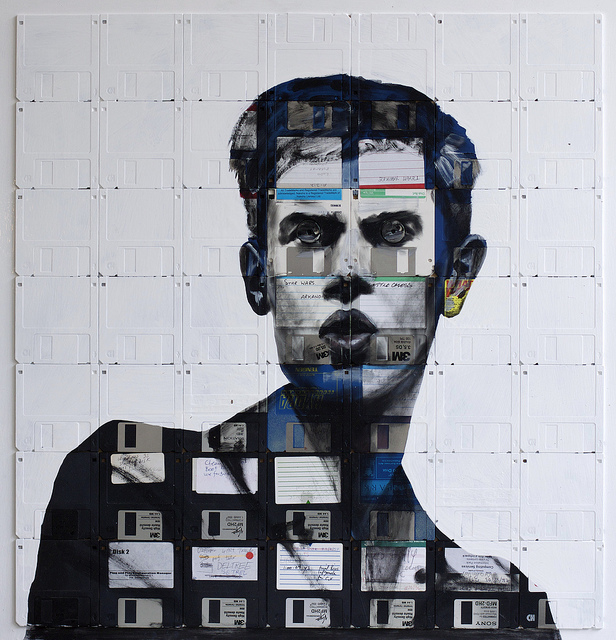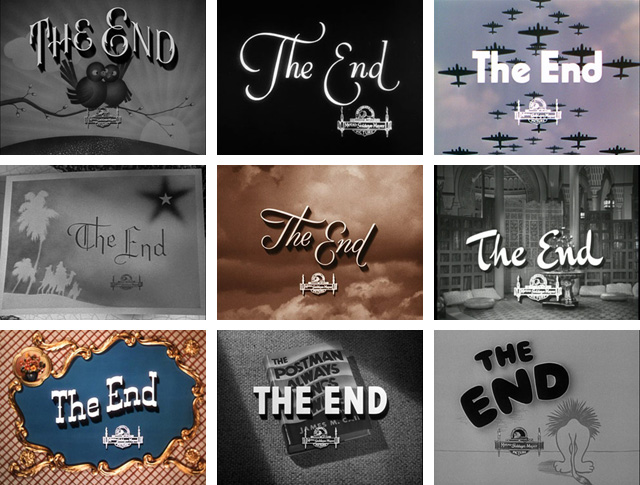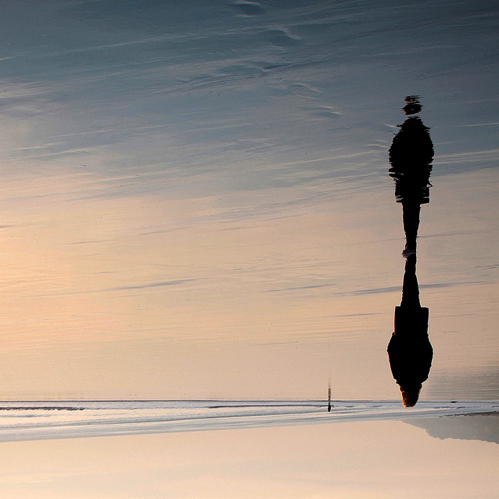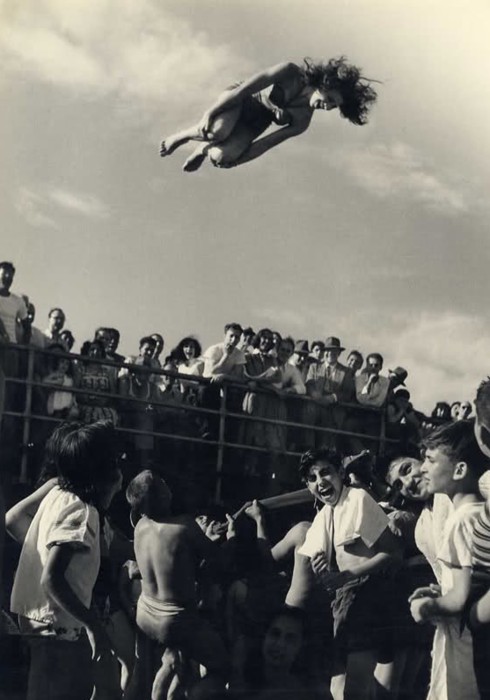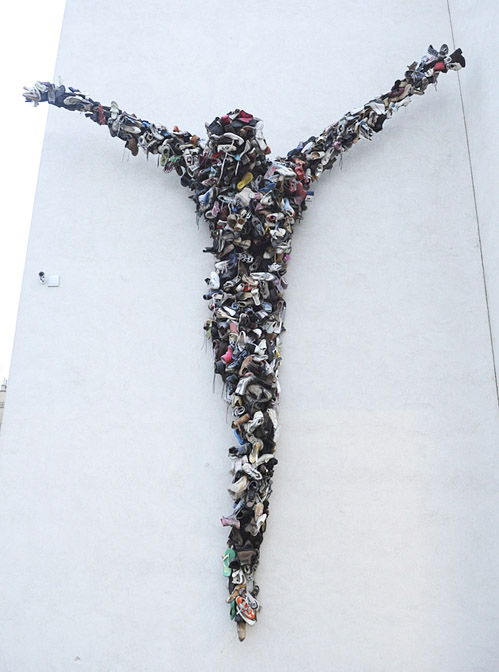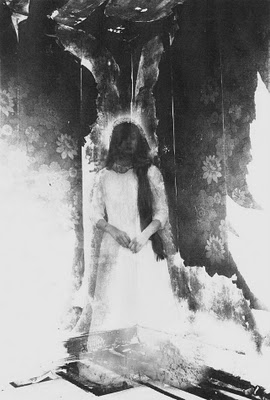
Home Made Movies and Viktor Asliuk
1. Home Movies
Home movies are the most precious and despised form of cinema. Made-in-America spectaculars remain the most visible form of the movies, while on the other end of the visibility spectrum lie home movies, with their spontaneous, off-the-cuff, anti-stylings. It is the most familiar form of documentary. Is it any wonder that the entire genre has within it a heart filled with suspicion, even revulsion? Oh please, not that, not a documentary. In other words: not a home movie, not myself, the long unedited hours. Don’t force me to look at myself as an object, a thing, gathered up in a loop of time without end. Condemned to repeat the same gestures until I die as a young man.
It is unrelenting footage that rolls on and on. It has an aimless determination, a persistence that lives outside the subject matter. You are looking into the mind of home video. It is innocent, aimless, determined, real.
They used to provide title kits for the home movie, where fathers could adhere plastic letters to a board. F-I-S-H-I-N-G T-R-I-P. S-W-I-M-M-I-N-G L-E-S-S-O-N-S. and most commonly T-H-E E-N-D. But even with the title’s declaration of closure, everyone knows there is no real end to the home movie, except in death. When the home movie maker is buried, or burned up in the crematorium, that’s when the movies will end and not a second before. Even if granddad or father or mother hasn’t pulled out the camera for years, there’s always a chance they might one day again. While watching these home flickers the room fills with the hope that it will end soon, that the hosts (father or mother) will die. The subject is shot, exposed, and then wishes for death. But not before he has left a trace or mark. Hamlet’s last words: Remember me (put me back together again, reassemble the parts, sharpen the dialogues.)
The reason why “The End” isn’t the end, is because all home movies are part of a single movie, episodes of a larger reel, the lights may come on, the projector’s overheated, it’s getting late. But there will be another night and another, and most cruelly, this serial form embraces massive repetitions. Another birthday, another holiday, another vacation. (These are also pictures of the leisure class. Queens had their portraits made. Mom runs her make-up and daughter is there to gather the evidence.) Certain elements repeat over and again. Questions of power for instance. Who is looked at and who does the looking. Till death do us part.
You keep on looking because things combine to hold you fast-a sense of the random, the amateurish, the accidental, the impending. You don’t think of the tape as boring or interesting. It is crude, it is blunt, it is relentless. It is the jostled part of your mind, the film that runs through your hotel brain under all the thoughts you know you’re thinking.
In my house the man who called himself father was behind the camera. Pretty standard fare. The hard gender roles of male and female were underlined by the home movie camera. It’s his camera, you, the woman, have to stand in front of it, sometimes, though mostly it’s for the kids. It’s his look, and most of all his direction. Stand over there! Walk towards me! Edward Said describes his father shooting volumes of home movie footage of his sister and himself, in locations all over the Middle East. But always the same shot, father at the helm, directing them, move here, then here, he urged them to run towards the camera. In Zamalek, Jerusalem, the streets of Cairo. Running towards the source of the image, and of themselves.
You know how kids get involved, how the camera shows them that every subject is potentially charged, a million things they never see with the unaided eye. They investigate the meaning of inert objects and dumb pets and they poke at family privacy. They learn to see things twice.
Home movies belong to dad, but video is a game everyone can play. The kids, dammit, they’re already digital. They’re either on or they’re off. So now it’s not just the look of authority, the patriarch looking over his holdings, his possessions (this is my couch, this is my car, this is my daughter). Now the underlings can reproduce the world on their own, in video. Never mind digital versus analog, this is castration. Child’s play behind the lens, looking back at the father. Less direction required now that video allows you to keep rolling. Don’t need to tell father what to do. Not that far. But far enough.
The world is lurking in the camera, already framed, waiting for the boy or girl who will come along and take up the device, learn the instrument.
What’s this? Looks like someone’s home movies. Home movies as insult, as palaver. Are you looking at me? Don’t give me that home movie look. The home movie is diminutive, small and contained, its subject is the home, but home is also its distribution outlet, the lonely place it may be released again, as memory, before a trapped audience. An audience which is also the cast. Not him again. Not her again. Not doing that. How could you have ever done that? And you, how could you ever have filmed it?
There’s something about the nature of the tape, the grain of the image, the sputtering black-and-white tones, the starkness-you think this is more real, truer-to-life than anything around you. The things around you have a rehearsed and layered and cosmetic look. The tape is superreal, or maybe underreal is the way you want to put it. It is what lies at the scraped bottom of all the layers you have added. And this is another reason why you keep on looking.
There is a new separation between production and exhibition. In the old days of the home movie there is the ritual of lights out and the movie screen and each reel lasts only three minutes. But today home movies are on TV, which reflects its real function. I’m tired, I’ve had a long day, I don’t want to think about anything, what’s on TV? TV is escape, time to shut down the mind, fill up the retinas with images from elsewhere. But the pictures don’t stay out there, they’re also here. They’re also your pictures. The pictures of dreams and fantasies, even in villages where they draw water from wells and there’s only one TV to gather round watching pop stars from the first world flog their wares. It takes root in that place, and now, with the home movie, it comes full circle. It’s you, you’re looking into the distance, the place of distraction, the place without thought, and you see yourself. Perhaps this isn’t the kind of distraction you had in mind. The hidden truth behind the camcorder is that while no one could possibly be interested in these home movies except the people who are in them, for the most part, these subjects don’t want to watch at all. The hidden truth is they all have to die, the maker has to die so the movie can end, and then everyone in the footage has to die to release it from its vault, its secret place, the home. Then this footage can find its way into the hands of strangers, reenergized in acts of archeology and reconstruction. Why that smile? That dress? It is a wasteful production to be sure, most home movies will become landfill, just like their makers, but for the remnants that survive there will be waiting hands and chance encounters which will make these memories sing again. Not as something from once upon a time, but now. Memories of the present.
The chance quality of the encounter. Random energies that approach a common point. There’s something here that speaks to you directly, saying terrible things about forces beyond your control, lines of intersection that cut through history and logic and every reasonable layer of expectation.
And you keep on looking. You look because this is the nature of the footage, to make a channeled path through time, to give things a shape and a destiny.
All quotations from Underworld by Don DeLillo (New York: Scribner, 1997)
2. Viktor stays HOME
Viktor Asliuk has taken the home movie as a form for his new work. The home movie? Does he belong here? Does he have the right? Yes. We have to occupy these forms, like a virus, we need to inhabit them, like squatters, and take them over, one at a time, or all at once, in order to give cinema a chance. In order to give us a chance. Last year Asliuk presented his monsterpiece, a shimmering portrait of the end of the world (after Breton: beauty is only the beginning of terror). We Are Living On The Edge is a twenty-one minute epic of fallen drunks and potato women clutching their head scarves with faces magnificently lined with history and a light that had to be lived in before it could be brought to the cinema. It is a miracle when these movies make it all the way from these frontiers (which require a lifetime of patience, rare in one so young) all the way over to the screen, but there it was. This year Asliuk has another film and I thought no, it can’t be, it’s much too soon. You don’t bend down deep into the well and drink those sweet waters too often, don’t you know you can die that way? The passage into the well is difficult and dangerous, many never make it, many manage to poke their nose in so they can know for themselves, yes, it’s deep, and some convince themselves they’ve gone a long distance, but only a few manage to sip from the very bottom. One thing for sure, it always requires a shield, a ruse, and an offering. This time round Asliuk uses the ruse of the home movie, it is his shield and protector, how could the gods of cinema strike him down for hubris when he’s only making a small home movie?
After he produced the epic in short form (with all the delicacy of poetry, the impossibly high standards no one will notice, save citizens of the future) Viktor still has an itch to scratch. There is time above all, the empty hours, a camera waiting, and with eyes that keen he can’t help noticing the light. The way light is falling. And his heart is falling with it. When she was asked why she wrote novels, Duras replied: because I lack the strength to do nothing. Viktor might have answered the same way. Ask anyone you meet, distracted with their busyness, their necessary duties, all of this is a sign of weakness, and the muses do not respect the weak. Offerings yes. Sacrifice years of your life for a better painting, book or movie? Of course. The humiliation of ill informed responses or worse, no response at all because the gold you’ve found on the other side still looks like base metal on this end? Sure. But not fear. Not cowering inside of your life fear. This is popularly known as the sophomore jinx—the second book, or movie, or conversation, invariably compared with the first. You’ve put yourself on the pedestal, now it’s time for the idols to come crashing down.
Kola (The Wheel) (23 minutes 2003) is no disaster film, but a home movie shot simply in grey and white (the labs are failing him, only when the film bursts into colour, or when he shoots in the most contrasty situations possible, does some of his magic shine through. If this film were properly printed… but never mind. Suffice to say that Kola’s printing look like the surviving remnants of the early century, dubs of dubs of dubs handed down through generations. The labs have failed him so we are condemned to a sketch, not a mural painting.) In place of the grand vista of rural life (though we are still in a small village in Belarus) we have a young family, leading the lives of their parents, and their parent’s parent’s. There is a child, miraculous new and old, what’s changed? And most especially the mother, who is not a great, starch filled mother Russia, but a sinewy survivor, stepping lightly through the stark frames, the emptied rooms (Where are their things? The gameboys and girls? The clutter?). She walks through the old world with grace, it doesn’t cling to her, holding her back, she is alive inside it, shining with it, not content (contentment is the end, is already a kind of dying. Please let tomorrow resemble today, I am content) but determined, in the way a smile can be determined. Earned. She has an earned smile.
They are young rurals far from the madding crowd. Living a life on the land, sowing the fields, which their parents might have worked. What other life is there? In Kola’s final image the man retires to his “backyard” (the word is an obscenity, an affront. I mean: the land behind his house). Metal poles spoked into earth three or four metres high are joined by a horizontal bar which the husband throws himself onto. There he begins to turn, lonely gymnast with the light behind him now, turning over and again in the oldest dream of revolution, that what has been, will be, expressing solidarity with his body, turning to face the future with someone else’s past which has become his own, not condemned but choosing. One must imagine Sisyphus happy. Everyday the small prison of our lives, our habits and protocols of greeting. Hi, how are you? The small defeats. Our small lives growing smaller, and knowing this smallness, and feeling it in his hands and his back every time he turns the husband says yes. Yes to this fabulous woman and the ordinary miracle of their child. Yes this was yours once. Yes this is mine now. A small victory, for Viktor, it is enough to say yes.
Originally published in: Dok Revue, a newspaper published by Jihlava International Documentary Festival, 2004.
